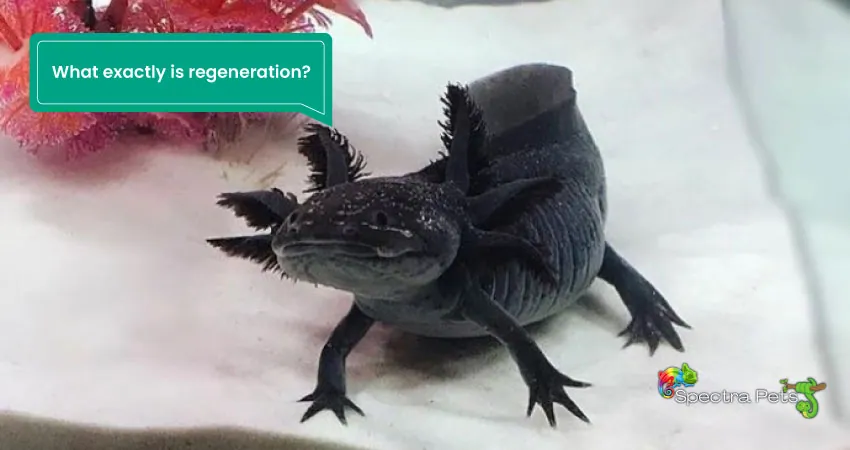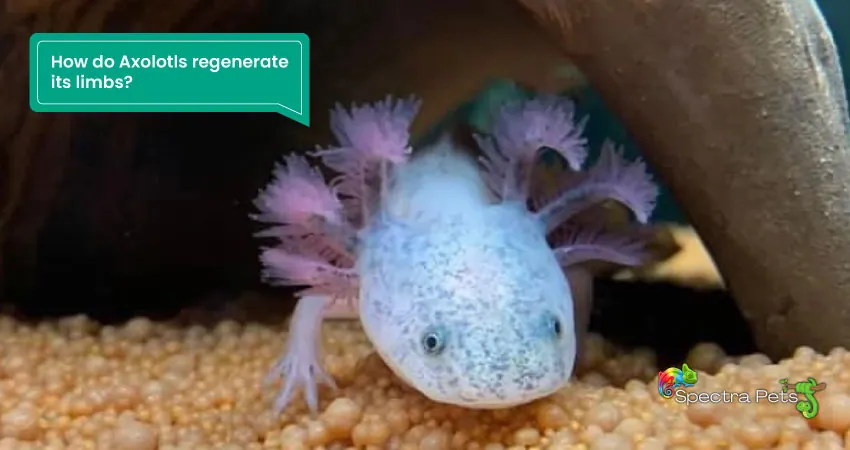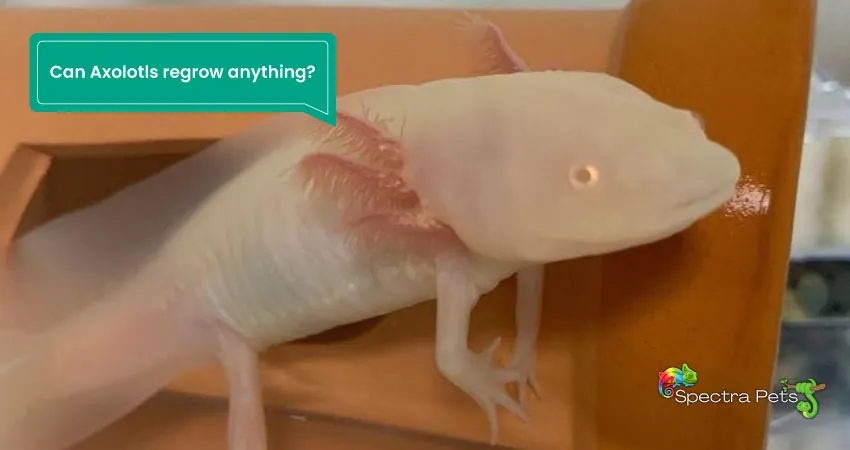Axolotl, which means “water monster” in the ancient Aztec language, is a cute creature that spends its entire life underwater and uses endearing gills to breathe. They are nearly extinct in the wilderness, but are commonly found in many experimental laboratories. This is due to the fact that axolotls are among nature’s most resilient creatures and possess a special skill that has long confounded scientists.
This unique skill is “regeneration.” Axolotls can regrow most of their body parts, like limbs, the spinal cord, and even their brain. Their regenerative properties make them perfect for performing various tests on them.
It’s intriguing, isn’t it? Let’s take a deeper look into the healing properties of these alien-like creatures!
What exactly is regeneration?

In order to understand how axolotls heal their injuries so effectively, we must first know what regeneration exactly is.
Life naturally involves regeneration. In order to maintain tissue homeostasis and the organism’s long-term survival, all organ systems must have the capacity to replace old and damaged cells. All living things share the capacity to heal wounds, along with many of the mechanisms used to do so.
But, in tetrapod species, there is a wide range in how well they can regrow more intricate structures, like limbs. Most organisms’ healing properties tend to weaken the more they age. The ability to regenerate as adults varies among species, though.
All tetrapods are believed to be capable of regenerating complex structures, like organs or limbs, as embryos. However, many of these species lose this ability as they grow older.
How do Axolotls regenerate its limbs?

Axolotls have a superior regenerative ability than that of any human. This ability is inherent in the axolotl genome.
These creatures can regrow an entire limb even after undergoing complete amputation. This process involves a complex orchestration of the cells of the limb that have survived the amputation. It is also known as “rainbow regeneration.”
After a limb is amputated, bleeding at the wound site is quickly stopped by a blood clot. After that, a layer of cells quickly covers the area where the amputation occurred, creating a structure known as the wound epidermis. The cells of the wounded epidermis quickly multiply and grow over the following few days.
Within a short period of time, the cells beneath the epidermis also start to divide quickly and form a conical body known as a blastema. Blastema cells are believed to be stem cells, which are cells that can differentiate into a variety of cell types.
Blastema cells, however, have limitations on the kinds of cells that they can develop into. For example, a blastema cell that was a muscle cell in the past can only re-form various types of muscle cells; it cannot become skin or cartilage cells.
Once the blastema has grown and multiplied, these dedifferentiated cells will eventually regain their identity as fully formed skeleton or skin cells. As the blastema and its cells multiply, the developing structure flattens and eventually resembles an exact replica of the amputated limb, complete with nerves and blood vessels that are connected to the rest of the body.
Can Axolotls regrow anything?

The regenerative abilities of axolotls are amazing. The list of body parts they can regenerate is remarkable. Dr. James Godwin has conducted thorough research on axolotl regeneration, and his findings are immaculate.
According to him, axolotls are able to regenerate extreme structures like limbs. Amputations performed on the upper arm can even lead to the regeneration of a full arm!
Additionally, they can completely regenerate the front portion of the brain, also known as the telencephalon. A completely crushed spinal cord will regenerate itself in about 20 days. The most fascinating fact about axolotl regeneration is that they can even regrow a third of the heart ventricle in just about a month or two!
These sorts of injuries can become absolutely fatal to any human, but axolotls manage to just heal and regenerate from these kinds of injuries.
Frequently Asked Questions (FAQ)
How long does it take for an Axolotl limb to grow back?
Younger axolotls have substantially better healing properties than adults. A young, amputated axolotl will manage to regrow any lost limb in about 40 days, whereas an adult one may need anywhere between 6 months and a year!
What happens if an axolotl is cut in half?
Well, it will meet its end. An axolotl that has been cut in half will not be able to regrow its body, not even with its superior regenerative abilities!
Can an Axolotl regrow its tail?
Absolutely! A severed axolotl’s tail will regrow in about two months.
Can an Axolotl regrow its spine?
According to Dr. James Godwin, the completely crushed spine of an axolotl will fully heal itself and reconnect to all nerves in just about 60 days!
Can Axolotls Gills grow back? How long does it take for Axolotl Gills to grow back?
A nerve-dependent process controls how the axolotl’s gills regenerate. A lateral gill wound in the presence of nerves can result in the development of an accessory gill. This entire process can be completed in under three weeks!
Are Axolotls immortal?
Despite their superb healing and regenerative properties, axolotls are not immortal, eternal creatures. They are just as vulnerable to diseases, injuries, and diseases, just like any other living being. Read more about axolotl lifespan.
Wrapping Up
Even though we are still a long way from being able to regrow a human limb, if we don’t understand how regeneration works in the fortunate animals that already possess this “superpower,” we put ourselves at a disadvantage.
With the help of tools that let researchers observe the minute genetic details of the regeneration process, we are gradually getting closer to comprehending what causes regeneration.
Researchers are hard at work to uncover the mysteries of regeneration, and perhaps one day, humanity will also have their hands on this superior ability!
Read Next:


Good post! We’re going to put a link to this great post on our blog. Don’t stop writing so well.